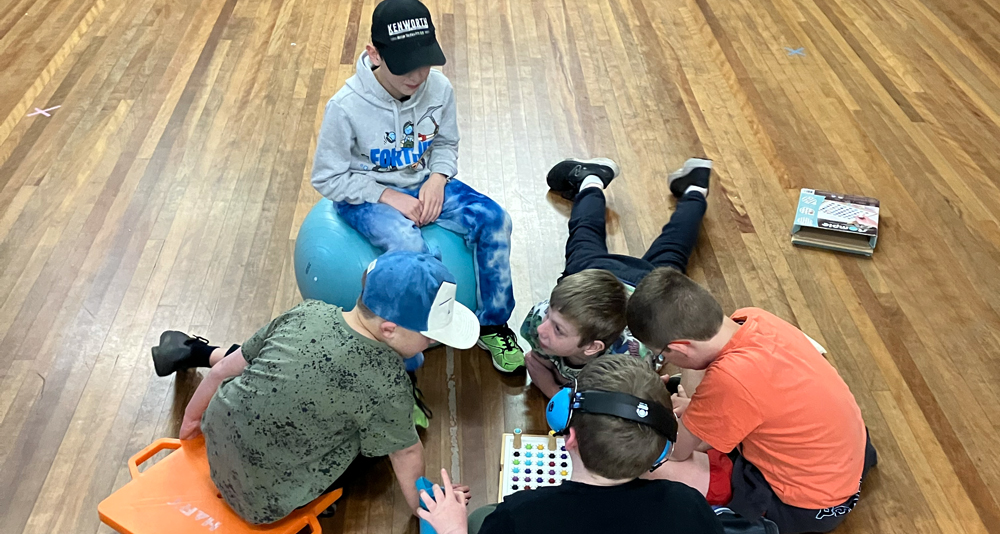
AUDITORY INTERVENTION
As part of working as an occupational therapist, and under sensory processing integration, we work with all of the 8 sensory systems.
One of these is the auditory system. The auditory system is complex and many other sensory systems are connected to it as a multisensory functioning organ.
So What is Auditory Processing?
Auditory processing is the process of recognising and responding to auditory input. Auditory processing refers to the ability to discriminate between similar sounds, tune into a parent, teacher or friend to pick up important information, in order to communicate effectively with others. There are multiple skills linked to auditory processing including memory, sequencing, development of expressive and receptive language, academic skills such as association of sounds with letters or numbers, listening skills, communication skills, social skills, and maintaining attention. One of the greatest skills needed is the ability to differentiate sounds. Our ears are developed to interpret the different frequencies of sounds a world presents us. The frequency (Hertz- Hz) of sound is then determined by the way in which sound waves vibrate whilst travelling through our ear. Once sound waves reach our ear, they cause the membranes within to vibrate at varying intensities, causing the activation of certain musculature of the ear, which then allows us to hear! There are varying frequencies such as:
Low Frequency sounds (1000 Hz and below): This sound activates the outer ear muscles, moving slow as it passes through. This includes sounds like:
- Dog’s barking
- Lawn mowers
- Thunder
- Vacuum cleaners
Middle Frequency sounds (1000-3000 Hz): This sound activates the middle ear and where language and social skill development is primarily processed.
High Frequency sounds (3000Hz and above): This sound activates our inner ear, moving hard and fast as it passes through. This includes sounds such as:
- Women’s voices
- Birds chirping
Challenges in Auditory Processing
Difficulties arise when the brain does not effectively or accurately interpret and respond to auditory information. This creates misinterpretation of information.
There are two forms of difficulties with auditory processing:
Hypersensitivity to sounds (Auditory Defensiveness)
This is a child who is overwhelmed by auditory input and may present with the following:
- Easily distracted by sounds not noticed by others (clocks, fans, air conditioners)
- Disliking sound of vacuums, hair dryers
- Startled or distracted by loud or unexpected sounds- running away, crying, covers ears.
- Frequently attempted to control sounds in their environment (asking people to stop talking)
- Refusing to go to busy/ noisy places
Hyposensitivity to sounds (Under Registration)
This is a child who does not easily register auditory information in his environment and may present with the following:
- Does not respond to verbal cues or own name
- Loves loud music or TV
- Loves to make sounds or noises
- Difficulty understanding or remembering what was said
- Talks to self when completing a task
- Needing directions repeated
At Explore and Soar, we are dedicated to understanding these sensory systems, determining ways to integrate and apply intervention approaches that alleviate these concerns. To do so, we engage in continued professional development and collaborative reasoning sessions with our senior OT’s.
There are many auditory interventions that can be supplemented into your sensory diet or OT home programming routine, presently at Explore and Soar, we utilise two intervention types; Therapeutic Listening and Quickshifts. In addition to these we have other auditory training and supports, which are tailored to each individual client where appropriate.
Contact our OT’s to find out more information or to see how we can help you. We will tailor an appropriate auditory intervention solution for your child.
From a personal perspective, when I’m feeling like my mind is scattered or overwhelmed, I put on one of our quickshifts that emphasise the lower frequency sounds in order to ground me, to feel safe and to slow my heartbeat.
If I’m feeling slow, I’ll put on a track with shifts of high and low tones, and varying rhythms to invite movement to my muscles to activate and boost my energy levels to get going.
When i’m really needing to concentrate and get work done, i’ll put on music with a constant rhythmic sound, that holds my attention in one space, it provides intensity with high and low sounds, with a fast but constant and non changing rhythm to allow my body to sync with the music and work to that speed.
Our families at Explore and Soar know we love to put on music in sessions to add as much support to our kids intervention as possible. Whether it be through speakers or headphones, the impacts to the child’s regulation, engagement, social skills and communication is amazing to see. Some examples of these include:
Child one: A young boy who has high levels of energy. One of his biggest challenges was sharing space, regulation and holding attention to share engagement for more than 5 minutes. When putting on the QS space, you could instantly see the change in his body. He slowed his body and movements, he took a deep breath and paused. The music gave him time and space, it give him the support he needed, prompting safety and regulation.
Child two: An overwhelmed child. He has challenges moving and communicating with others around him, to follow the lead of others, to transition between environments and settle enough for sleep. With persistence, through each day of our 5 day intensives, little by little, the boy that started the week was a completely different child by the end of the week. He stayed in the room for the whole 50 minutes, he could regulate and move through the changing of ideas, he shared eye contact, laughs and we beautifully transitioned out of the session with no crying or frustrations.
Child three: With a confident personality, she loves to be in control of the things around her. She does so with constant attempts to change the activities that are new or tricky, tensing her body to try and stabilise movement or completely avoiding an activity all together if it means using both sides of her body together. Music had an instant effect on her body. She began to use both her left and right hand together during sit down fine motor tasks. The music prompted a huge smile and by moving with the rhythm of the music, she gracefully challenged herself throughout the activities.
Auditory processing is such an integral part of development. If you think your child may need some auditory interventions, please don’t hesitate to reach out and see how we can help!
Until next time,
Maddie
ORIGINALLY PUBLISHED SEPTEMBER 1, 2021







Leave a Reply